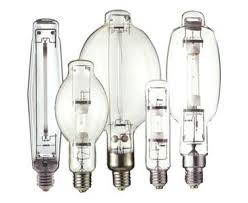How poor energy efficiency causes HID demands to decrease
Time:2015-12-25 Views:2394 Compile:SUNPER
Energy efficiency is very crucial. The consequence of having poor efficiency is decrease of the HID demands. The American Electrical Manufacturers Association (NEMA) accepted the proposal from the department of energy in United States. On 2nd December, DOE said that the energy specifications of the high intensity discharge lamps (HID) is not very high and cost effective. They believe that the HID lamps are not very important for increasing the energy efficiency standards for the US to save energy as well as reduce carbon efficiency.
The HID lamps are widely used in the high bay lamps and in both outdoor and indoor area lighting. It is a specialization and thus a wide variety of lamps, metal halide lamp covers and high pressure sodium (HPS) light sources. The DOE prudent analysis of the early technology in the past five years showed that there is HID energy saving effect. The most recent analysis of DOE showed that with the new technology, HID has been replaced especially with the introduction of the solid state lighting. Thus, the product of the HID products is changing.

The NEMA president and CEO by the name Kevin Cosgriff said they are sorry for the current market situation. They are cautious about the consumer welfare, evolution as well as vendor pressure. The lighting technology is supporting DOE in order to boost the energy saving lamps as well as the HID specifications which are currently not so helpful to the public. NEMA noted that the HID lamps and fluorescent tubes have a stable recession.
The HID lamp shipments started to decline from the third quarter of year 2015. The sodium shipments started declining since last year and so far it has declined by 12.3 percent while the mercury decreased by 16.3 percent since last year. The metal halide lamp has decreased by 14.5 percent. The sales of the third quarter of year 2015 accounted for all the sodium metal lamps was 3.7 percent while that of mercury and metal halides were 33.2 and 63.1 percent respectively.
According to DOE, the HID light energy saving standards are not very effective. In the same period of year 2015, the NEMA’s fluorescent tube shipments report showed that the trend of shipments continued falling compared to year 2014. That of tube lamps declined to 40.4 percent. This decrease has been there for seven consecutive quarter shipments. In the third quarter of this year (2015), T8 fluorescent tube lamps of all shipments were 72.8 percent while that of T 12 and T5 were 15.5 percent and T5 10.9 percent respectively.
More Posts
▇ LED Lights and Traditional Lights
User comments
Your current input 0 characters(Reply for at least 6 characters)。
Online Services

Mobile: +86 18938902515 (Mr.Allen)
Tel:+86 755 23159099
Fax:+86 755 61673151
E-mail: sales@sunper.net
zip code: 518108











